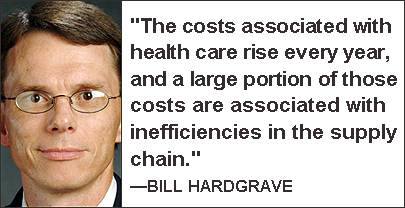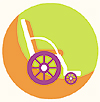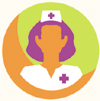Three years ago, Brigham and Women’s Hospital, a 747-bed nonprofit in Boston affiliated with Harvard Medical School, had a terrible problem with portable medical devices and equipment disappearing from its many wings and units. Each year, the hospital had to replace 100 percent of its 12-lead EKG cables, 36 percent of its temporary cardiac pacers and 9 percent of its telemetry transmitters, among other devices. Equipment losses cost the hospital hundreds of thousands of dollars each year, not to mention the labor costs involved when nurses and other staff members had to hunt for missing devices throughout the 17-story hospital.
Hospital executives realized they needed a better way to track equipment. In 2005, they introduced a real-time indoor positioning solution from Radianse, in which active (battery-powered) RFID tags were applied to the cables, pacers and transmitters. During the yearlong pilot, the hospital lost only two transmitters and two cables. The staff also discovered how some items had disappeared: Cables and pacers got caught in bed sheets and were sent to the laundry, and nurses hid equipment in closets or behind ceiling tiles so it would be on hand when needed.
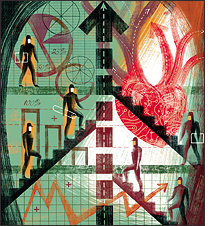
“Hospitals hire clinicians to care for patients. They don’t hire people to chase equipment,” says Michael Fraai, director of biomedical engineering for Brigham and Women’s Hospital. “Through process changes, we realized we could minimize losses.”
This year, Brigham and Women’s Hospital is expanding its use of RFID hospital-wide, expecting to tag 6,000 medical devices, including $15,000 audible monitors, $10,000 defibrillators and $1,600 pulse oximeter machines. Hospital staff will be able to find devices by accessing nearby computers, where they will get a real-time accounting of every tracked device used in all major care areas.
The hospital expects to save an estimated $300,000 per year—and increase patient and staff satisfaction by allowing staff to spend more time caring for patients. “We expect to see a return on investment within three to four years of when the RFID system is fully operational,” says Fraai. The hospital’s costs for this project are estimated at less than $1 million. During the pilot phase, the hospital invested $80,000 and saw savings of $66,000 in one year alone.
Many hospitals and medical centers around the world are realizing similar benefits from keeping tabs on expensive equipment, finding quick returns from RFID pilots and full-scale deployments. Unlike some industries, such as consumer product goods and electronics, in which companies have had to RFID-tag goods to meet mandates from Wal-Mart, the U.S. Department of Defense and other organizations, the health-care industry is choosing to deploy RFID on its own. And unlike some companies that have identified how to recoup their investment in RFID technologies but are keeping the results of their deployments close to the vest for competitive reasons, medical facilities have been publicly forthcoming with their RFID success stories (see “Hospitals Share Their RFID Successes”).
“The implementation of active RFID solutions in health care or hospitals, more specifically, provides very clear and measurable ROI for the customer,” says Josh Slobin, marketing director of AeroScout, a provider of real-time location systems (RTLSs). “No RFID deployment is without its complexities. The hospital environment offers a relatively clear path to deployment and ROI. It’s a self-contained environment, and with assets being tracked or, in some cases, patients, there is a clear path through that environment to ROI.”
Mounting equipment losses are one of the major drivers in the adoption of RFID in the health-care industry. The global health-care industry spent $20.8 million in 2006 on RFID for asset-tracking and real-time location systems, according to ABI Research. That number is expected to increase nearly eight-fold over the next five years, to $155 million by 2011.
Hospitals and medical centers from Belgium to South Korea are also realizing benefits from tracking patients, to increase patient safety and satisfaction. In addition, medical facilities are using the data gathered from tracking medical equipment, patients and staff to automate a variety of processes, including updating patient records and billing for services.
While health-care facilities are increasingly using closed-loop RFID applications to become more efficient and save money, great inefficiencies currently exist in the open supply chain—which provides hospitals and medical centers with everything from pharmaceuticals to medical equipment, clean gowns and paper products. And that may prove to be a harder problem to fix.
From IT Laggard to Leader
The health-care industry has long been considered somewhat of a laggard in information technology adoption. In many hospitals, for example, patient whereabouts are still recorded on whiteboards. But according to a recent survey of U.S. health-care providers by the Spyglass Consulting Group, a market intelligence firm, there is growing interest in tracking patients with RFID, to bolster patient safety and satisfaction, protect health-care providers from lawsuits and help hospitals treat more patients. While 8 percent of respondents were using RFID for patient tracking in 2005, 21 percent said they planned to start rolling out such deployments in 2007.
Health-care facilities in Asia, which were the first to deploy RFID patient-tracking solutions, had a strong impetus to do so: regional efforts to battle contagious diseases, such as SARS. Hospitals in the United States, Canada and Europe started tracking patients for safety reasons—to locate Alzheimer’s patients who may wander off, and protect newborns from possible abduction and keep them paired with the right parents. Now, hospitals and medical centers in Asia, Europe and North America are finding a wide variety of other reasons to track patients, as well as staff, with RFID technologies.
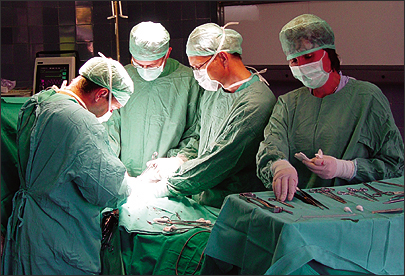
In March, the University Hospital of Ghent in Belgium announced that it was tracking at-risk cardiac patients, using RFID tags tied to heart monitors to alert staff in the event of emergencies. Earlier this year, Heartlands Hospital in Birmingham, England, started issuing RFID-enabled wristbands to track surgical patients and procedures in its thoracic (chest) and ear, nose and throat surgical wards. In April, the Lehigh Valley Hospital and Health Network, a group of three hospitals in eastern Pennsylvania, deployed an ultra-wideband RFID system to track the location and status of surgical patients, from pre-op to surgery and on to post-op.
In 2006, KangNam St. Mary’s Hospital, an 850-bed hospital affiliated with the Catholic University of Korea in Seoul, introduced an RTLS from AeroScout, to improve its ability to see more patients. For years, KangNam had been steadily increasing the number of medical examinations conducted on patients each day in its General Medical Examination Center. But even with the use of bar-code technology to keep tabs on patient data and lab tests, the increasing patient load led to delays, long waiting periods and a drop in the overall patient satisfaction level.
“Patients were coming in and going through complex processes that required them to go from room to room to room or process to process,” says AeroScout’s Slobin. “They didn’t have clear visibility of what the next step was, where in the process they were, or why they were just sitting around.”
The RTLS, which tapped into the hospital’s existing wireless network, tracks patients and staff with RFID-enabled ID cards. The hospital now has a better overview of its operations and has been able to reduce by 15 percent to 20 percent the overall time required for medical checkups—from three hours per patient to two and a half. The system alerts staff if patients leave designated areas, and patients and family members can view their status and waiting time for each exam room at kiosks located throughout the facility. In addition, paperwork has been reduced.
Hospitals also realize that they have a lot to gain by using RFID to not only improve patient care and safety but also protect their surgeons, nurses and other health-care practitioners from making hazardous mistakes, which could lead to malpractice lawsuits. Two years ago, Klinikum Saarbrucken Hospital in Germany started tracking patients with RFID to give staff easier access to patient data and ensure patients are given the right drugs and dosages. And in May 2006, Ospedale Maggiore, a hospital in Bologna, Italy, began using an RFID system to match patients and blood bags, ensuring patients are given the right blood during transfusions.
Several hospitals are starting to use RFID to improve surgical procedures. Chang-Gung Memorial Hospital in Taipei, Taiwan, last year started using RFID-enabled patient wristbands from Precision Dynamics Corp. to identify the operation that each patient is supposed to undergo, to ensure, for example, that surgeons operate on the right organ. Earlier this year, Siemens IT Solutions and Services teamed up with Klinikum Rechts der Isar (Isar River University Hospital) in Munich, Germany, to test whether the RFID-tagging of sponges, swabs and other items could prevent them from being accidentally left inside a patient’s body after surgery.
Leveraging the RFID Infrastructure
Within some health-care facilities, administrators are realizing that the data gleaned from tracking both equipment and people can be used to automate processes that have traditionally relied on paper record-keeping or phone calls to other departments. Patient records can be automatically updated with new orders for medicines or procedures. Billing to insurance companies can be automatic when medical equipment enters a patient’s room. Nursing stations can be automatically notified when a patient’s lab results are ready. The data can even be combined to send signals to environmental crews to clean out a room as soon as a patient is discharged, increasing the number of patients that can be treated.
“If a 300-bed hospital can get a half a percentage patient throughput increase,” says Mark Sakaniwa, Radianse’s president and CEO, “that can be $3 million.”
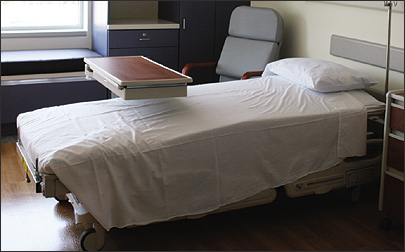
Providence Health Center in Waco, Texas, implemented an RTLS from Radianse that tracks patients, staff and equipment. The hospital, which is undergoing a $48.5 million expansion project, is nearly doubling the number of beds in its emergency department, increasing the number of operating suites from nine to 15, and expanding nearly every other department. Located in an area that is seeing a growing and aging population, Providence was increasingly hearing patient complaints about waiting times in the emergency department and the inability to admit patients as quickly as needed.
Part of the problem, hospital administrators realized, was that they didn’t have a good real-time accounting of hospital-wide needs at any given time. By the time nursing supervisors completed rounds, which would take two and a half hours, patient census would be outdated. Often they wouldn’t know that a patient had been discharged and a room cleaned so that a new patient from the emergency room or surgery could be given that bed.
Now, there are 42-inch plasma displays in each of the general nursing units—one for patient flow management and one for asset tracking—so staff can easily view patient status throughout the hospital, locate assets and find staff. Before the RFID system was deployed, it took on average 45 minutes on weekdays and 60 minutes on weekends to notice that a room was empty and notify environmental services so it could be cleaned and readied for the next patient. “Right now, our preliminary results indicate we have a 20 percent improvement on weekdays—which amounts to a 10-minute improvement in turnaround time,” says Brenda Davis, vice president of clinical services at Providence Health Center, bringing the average weekday turnaround time down to 35 minutes. “On weekends, we have seen a 25 percent improvement [lowering weekend turnaround time to 45 minutes]. Our goal is to turn over a bed in 20 minutes.”
Rx for Health Care
It’s clear that RFID technologies can improve inefficiencies within hospitals and medical centers, but for these benefits to become more widespread, the health-care industry needs to change its traditional posture related to technology. For too long the potential success of IT in administrative and accounting procedures has been overlooked. “One of the key challenges for the health-care industry is that the IT budget has been limited,” says Michael Liard, research director for RFID and contactless technologies at ABI Research.
The need to overcome cultural hurdles to remedy inefficiencies extends to the open supply chain, which provides hospitals and medical centers with medical equipment, pharmaceuticals and many other products. Health-care facilities need better tools to track inventory, so they can use medicines before expiration dates and order only what is needed instead of amassing large stockpiles.
Supply chain issues are starting to be addressed by a growing number of health-care providers and manufacturers of medical devices and pharmaceuticals. “Here is an industry that has the ability to leapfrog over a generation of technology by going straight from no system to RFID,” says Bill Hardgrave, executive director of the RFID Center at the University of Arkansas, which announced in March that it is teaming up with Wal-Mart and Blue Cross Blue Shield to create a research center to focus on improving the health-care delivery system with the use of information technology, including RFID. “The industry needs help. The costs associated with health care rise every year, and a large portion of those costs are associated with inefficiencies in the supply chain.”
Efforts to adopt RFID to help improve inefficiencies have been slowed because of the complexity and variation of the health-care supply chains. While there are some large hospital networks—such as the U.S. government-run Veterans Health Administration—that can afford to buy in bulk and ship to various subsidiaries, the majority of health-care establishments deal with far smaller quantities of medicines and other goods. In addition, questions still need to be resolved regarding standards to track medical products across the industry. Some manufacturers, such as pharmaceutical companies, are tagging drugs with high-frequency tags to combat counterfeiting. But others that supply medical goods to retail chains are using ultrahigh-frequency tags to comply with retailer mandates.
“The health-care supply chain is overall behind the consumer packaged goods supply chain,” says Hardgrave. “Many types of supplies come into a doctor’s office or hospital, and many of those are not even bar coded. You’ll also see large suppliers of health-care products that may be bar coding to go through the retail supply chain, but not bothering to bar code those products that go through the health-care supply chain. It’s not needed or expected right now.”
Health-care facilities also need to understand that RFID is not a cure-all. They have to change business processes, depending on what the data reveals, to gain efficiencies, cut costs and improve health care. But they have much to gain. “What hospitals want to do is take care of their patients,” says Radianse’s Sakaniwa. “This makes sure they’re giving them the best level of care as efficiently and cheaply as they can.”
Hospitals Share Their RFID Successes
Hospitals are in the business of caring for patients, and, for the most part, they don’t have to compete to fill their beds. Perhaps that’s why they’ve been more willing than other companies and organizations to share the benefits they’ve achieved from deploying radio frequency identification technologies. Or perhaps it’s because within months or a year of initiating an RFID pilot or a full-scale deployment, they’ve realized cost savings and even a return on investment—and that’s something to shout about. Whatever the reason, perhaps these success stories will inspire other medical facilities to heal themselves.
Paying for itself.
Since November, when Wayne Memorial Hospital in Goldsboro, N.C., started using a real-time locating system to track about 1,300 medical devices, including infusion pumps, diagnostics machines, blood warmers, computers on wheels and wheelchairs, it has saved more than $300,000—more than it cost to install the system.
Dressing for success.
St. Olavs Hospital in Trondheim, Norway, deployed an RFID system in September 2006 to track more than 130,000 garments, including operating gowns, robes and scrubs. The hospital expects to save several million Norwegian kroner each year through improved inventory accuracy and labor reductions—and it’s already saved an estimated 40 million kroner ($6.76 million) in space savings.
Freeing up patient beds.
In 2006, St. Vincent’s Hospital in Birmingham, Ala., deployed a patient-tracking and real-time clinical information system. Thanks to the RFID system, the hospital estimates that it was able to serve more patients, for a net revenue increase of $2.58 million during the pilot phase alone. The 12-month ROI for the project was 151 percent, according to the hospital.
Healing conditions.
An RFID-enabled patient ID system deployed in 2005 at New York City’s Jacobi Medical Center not only enhances patient care and staff working conditions but also is estimated to be saving $1 million per year.
Saving lives and money.
Pinnacle Health, a hospital group in central Pennsylvania, has been tracking patients and assets since 2005. The tracking of an estimated 8,000 items, from beds to intravenous pumps, has resulted in a documented $1.4 million in savings.
Operating in the green.
Hannibal Regional Hospital in Hannibal, Mo., started an operating room workflow program in 2004 to track patients and staff with RFID tags. The program not only helped reduce operating room overtime by 50 percent but also paid for itself within a year.
Illustration by Anna & Elena Balbusso.


